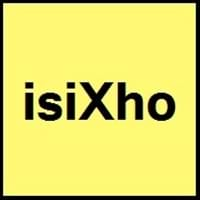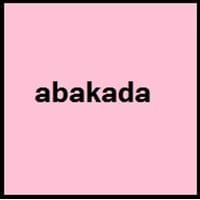Xhosa and Tagalog
Countries
South Africa
Philippines
National Language
South Africa
Philippines
Second Language
Lesotho, South Africa
Filipinos
Speaking Continents
Africa
Asia, Australia
Minority Language
Botswana, Lesotho
Australia, Canada, Guam, Hong Kong, New Zealand, Singapore, United Kingdom
Regulated By
Not Available
Komisyon sa Wikang Filipino, National Languages Committee
Interesting Facts
- Xhosa has 15 click sounds, borrowed from the khoi-khoi and san languages of the South Africa.
- The same sequence of consonants and vowels can have different meaning when said with different tones, so Xhosa is tonal.
- In 1593, "Doctrina Christiana" was first book written in two versions of Tagalog.
- The name "Tagalog" means "native to" and "river". "Tagalog"is derived from taga ilog, which means "inhabitants of the river".
Similar To
Zulu, Swazi, and Ndebele
Filipino, Cebuano and Spanish Languages
Derived From
Khoi-Khoi and San Languages
Not Available
Alphabets in
Xhosa-Alphabets.jpg#200
Tagalog-Alphabets.jpg#200
Writing Direction
Not Available
Left-To-Right, Horizontal
Thank You
Ndiyabulela
Salamat po
How Are You?
Unjani
Kamusta ka na?
Good Night
Ulale kakuhle
Magandang gabi
Good Evening
Ubusuku obuhle
Magandang gabi po
Good Afternoon
Uben' emva kwemini entle
Magandang hapon po
Good Morning
Molo
Magandang umaga po
Sorry
Ndicela uxolo
pinagsisisihan
Bye
Uhambe/Usale kakuhle
Paálam
I Love You
Ndiyakuthanda
Iniibig kita
Excuse Me
Uxolo
Ipagpaumanhin ninyo ako
Dialect 1
Gcaleka
Batangas Tagalog
Where They Speak
South Africa
Batangas, Gabon
Where They Speak
South Africa
Philippines
Where They Speak
South Africa
Philippines
How Many People Speak
Not Available
Native Name
isiXhosa
Tagalog
Alternative Names
“Cauzuh” (pej.), Isixhosa, Koosa, Xosa
Filipino, Pilipino
French Name
xhosa
tagalog
German Name
Xhosa-Sprache
Tagalog
Pronunciation
Not Available
[tɐˈɡaːloɡ]
Ethnicity
amaXhosa, amaBhaca
Tagalog people
Language Family
Niger-Congo Family
Austronesian Family
Subgroup
Benue-Congo
Indonesian
Branch
Bantu
Not Available
Early Forms
No early forms
Proto-Philippine, Old Tagalog, Classical Tagalog, Tagalog
Standard Forms
isiXhosa
Filipino
Language Position
Not Available
Signed Forms
Signed Xhosa
Not Available
Scope
Individual
Individual
ISO 639 6
Not Available
Not Available
Glottocode
xhos1239
taga1269
Linguasphere
99-AUT-fa
31-CKA
Language Type
Living
Living
Language Linguistic Typology
Subject-Verb-Object
Object-Verb-Subject, Subject-Verb-Object, Verb-Object-Subject, Verb-Subject-Object
Language Morphological Typology
Not Available
Not Available
All Xhosa and Tagalog Dialects
Most languages have dialects where each dialect differ from other dialect with respect to grammar and vocabulary. Here you will get to know all Xhosa and Tagalog dialects. Various dialects of Xhosa and Tagalog language differ in their pronunciations and words. Dialects of Xhosa are spoken in different Xhosa Speaking Countries whereas Tagalog Dialects are spoken in different Tagalog speaking countries. Also the number of people speaking Xhosa vs Tagalog Dialects varies from few thousands to many millions. Some of the Xhosa dialects include: Gcaleka, Thembu. Tagalog dialects include: Batangas Tagalog , Bisalog. Also learn about dialects in South American Languages and North American Languages.
Xhosa and Tagalog Speaking population
Xhosa and Tagalog speaking population is one of the factors based on which Xhosa and Tagalog languages can be compared. The total count of Xhosa and Tagalog Speaking population in percentage is also given. The percentage of people speaking Xhosa language is 0.11 % whereas the percentage of people speaking Tagalog language is 0.42 %. When we compare the speaking population of any two languages we get to know which of two languages is more popular. Find more details about how many people speak Xhosa and Tagalog on Xhosa vs Tagalog where you will get native speakers, speaking population in percentage and native names.
Xhosa and Tagalog Language Codes
Xhosa and Tagalog language codes are used in those applications where using language names are tedious. Xhosa and Tagalog Language Codes include all the international language codes, glottocodes and linguasphere.





